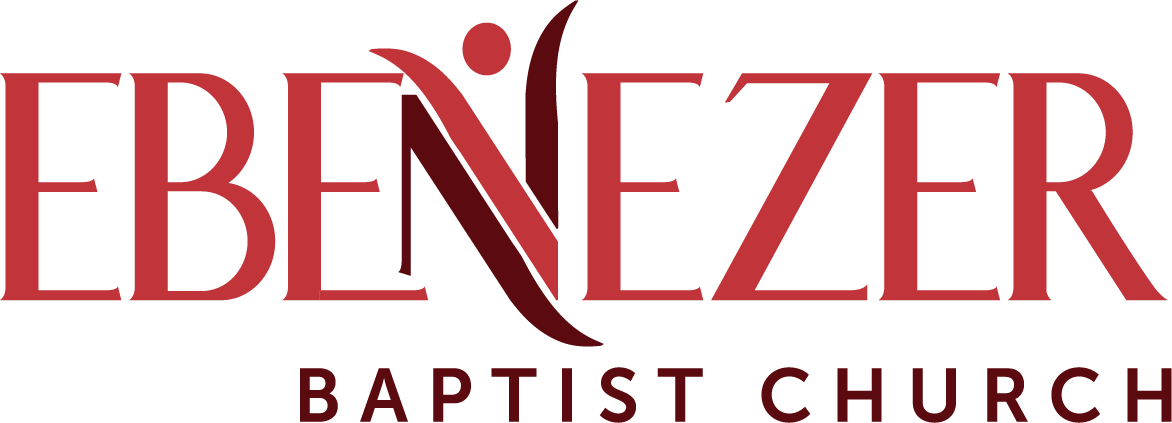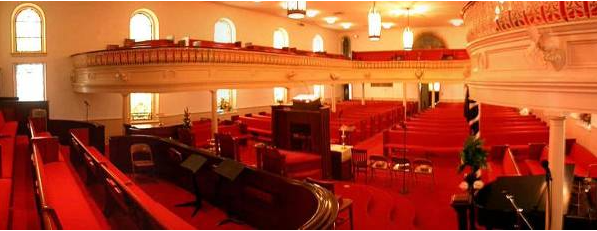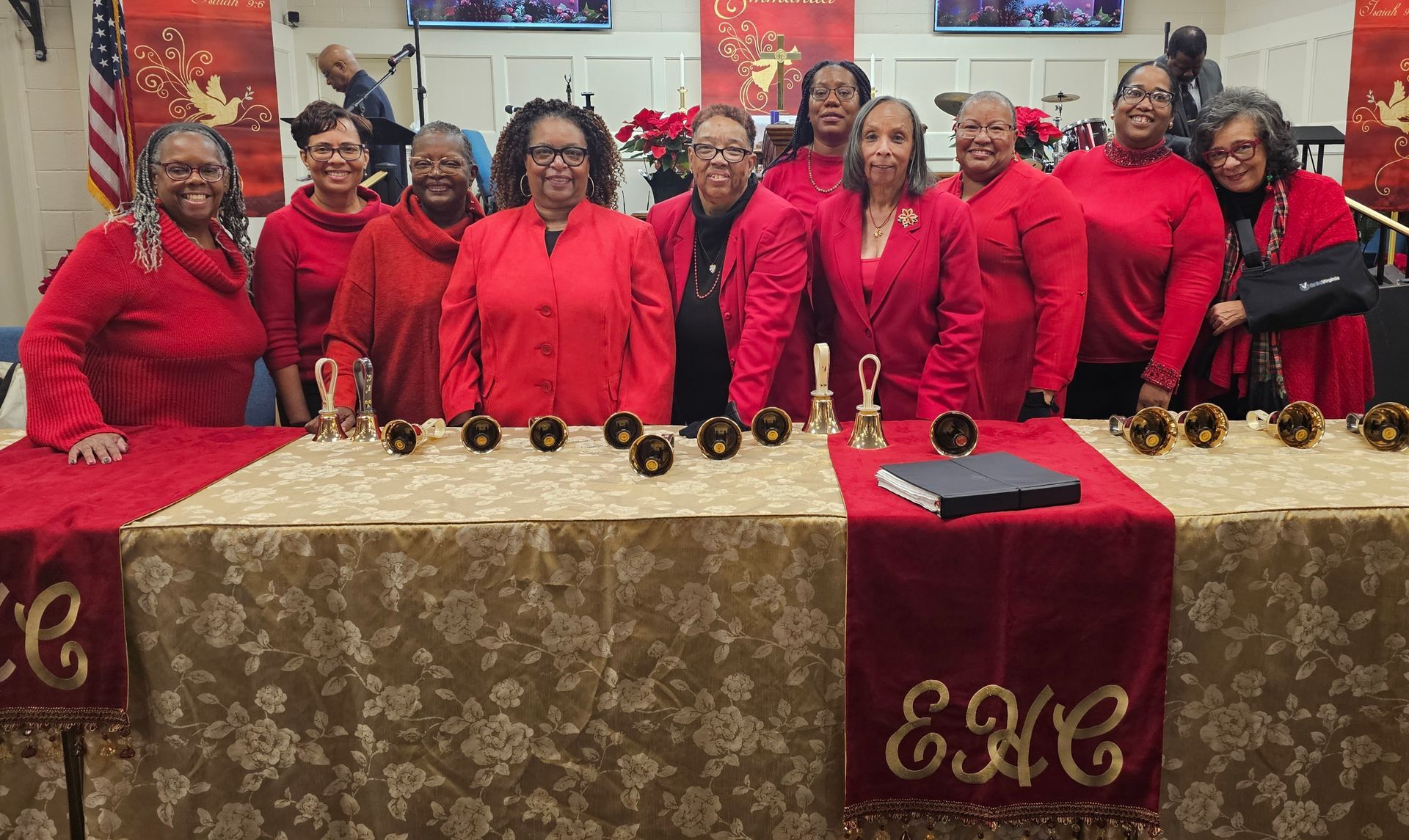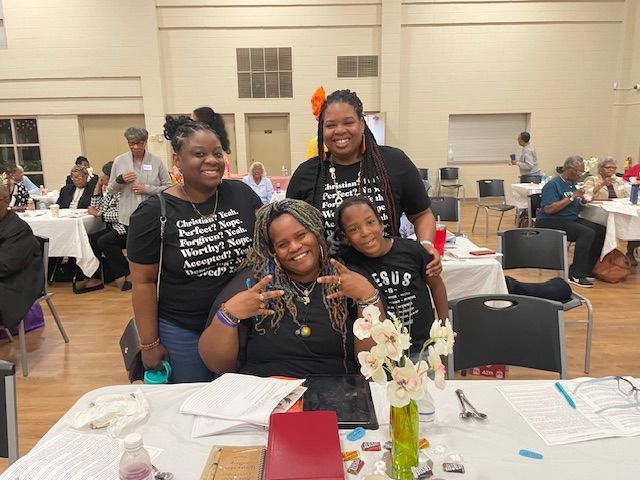OUR CHURCH HISTORY
“Here I raise mine Ebenezer, hither by Thy help I’m come. And I hope by Thy good pleasure,
safely to arrive at home.” “Come Thou Fount of Every Blessing” (18th Century Hymn)
In 1856, our all-wise God, saw fit to grant many of His devout followers of the First African Baptist Church, a pathway to establish a new church for people of color. On July 16, 1856, a committee was formed to explore the formation of a new African Baptist Church. Rev. Dr. Robert Ryland, Pastor of First African Baptist Church, who was white, led the committee which was responsible for finding a location for the new church.
After searching for a suitable site, the committee met in the home of Mr. John Adams at 227 W. Leigh Street where committee member, Mr. Benjamin Harris, shared a vision he previously had. In the vision, according to Mr. Harris, he passed a body of water at the corner of Leigh and Judah Streets, where a man with outstretched arms appeared on the water and declared, “I have chosen this spot from the foundation of the world as the place for the fishing of men’s souls.” The committee thought that Mr. Harris’ vision was a prophetic sign, and so they decided that this site would be the perfect location for the new Third African Baptist (the original name of Ebenezer Baptist Church).
On October 5, 1856, Rev. Ryland reported that the committee had sanctioned the lot at the corner of Leigh and Judah Streets. He was authorized to purchase the lot for $10.00 per foot. On December 7, 1856, Rev. Ryland offered proof that he had purchased the lot for $541.23. During the winter of 1856-1857, Ebenezer’s first building campaign took place. Members of the building committee were given books to solicit subscriptions for this fund. On March 7, 1858, Rev. W. T. Lindsay was invited to hold services in the basement of the new church. On April 4, 1858, the new building was dedicated. A committee was then appointed to compile the names of the persons who would make up the membership of the new church, and each member on the roll was identified as either “slave” or “free.” It was determined that all members of First African Baptist Church living west of Second Street and north of Broad Street were to form the membership of the new church.
Dedication Day for the new church was May 30, 1858. Throngs of worshippers proceeded from First African Baptist Church, at 14th and Broad Streets, to the new Third African Baptist Church, later called Ebenezer Baptist. Singing jubilantly as they went, they were led in song by Brother Stephen Douglas Jones.
On July 25, 1858, Rev. W. T. Lindsay (white) was elected the first pastor. Rev. Peter Randolph, in May of 1865, at the end of the Civil War, became the first black pastor of Ebenezer Baptist Church. Public Schools for Richmond blacks began in the basement of Ebenezer during this period. In 1867, Ebenezer’s first daughter church, Cedar Street Memorial Church, was organized. Also, the Shiloh Baptist Association was established at Ebenezer with Rev. Randolph as its president.
Rev. J. C. Allen served as pastor from April 1870 to July 1870.
In October 1870, Rev. Richard Wells was elected pastor and during his tenure, four daughter churches were established: St. John Baptist (1870), Pleasant Grove Baptist and Riverview Baptist Churches (1885), and Mt. Carmel Baptist Church (1888). In 1883, Hartshorne Memorial College, a women’s school, was organized in Ebenezer. During Dr. Well’s pastorate of 31 years, the YMCA, the Ebenezer Aid Society, the Baptist Young Peoples Union, and the Sunday School with adult and children’s classes were all organized.
The tenure of Rev. Dr. William H. Stokes as pastor began in January 1902. Many members were added to the membership roles via baptism. For one 6-week period, a total of 700 people were converted. In 1905, Mt. Vernon Baptist became Ebenezer’s sixth daughter church. Dr. Stokes, in his work with Lott Carey, became the editor of the Lott Carey Herald. Organizations formed during his pastorate include the Women’s Missionary and Educational Circle, Campfire Girls, the Girls’ Protective League, and the Council of Negro Women. A remodeling project of the church was completed in May 1912. The first kindergarten in the city of Richmond was organized by Mrs. Druscilla Gilpin in 1914. Troop 78 of the Boy Scouts of America was organized in 1929 at the church.
In December 1933, Rev. Dr. E. E. Smith, Sr., preached his first sermon as Pastor of EBC. During his pastorate, several ministries and organizations were formed: the Junior Choir, the Jewel Troop 35 of the Girl Scouts, the Ebenezer Glee Club, and the Gleaners Bible Class. In January 1940, Ebenezer hired a full-time executive secretary, Miss Maria Burke. The Religious Educational Building was completed in 1952. Dr. Smith and Brother Ellsworth Storrs were credited with preventing the demolition of the church to accommodate the new interstate highway I-95. Dr. Smith served Ebenezer for 26 years.
Dr. David L. Shannon became the pastor of EBC in 1960. As shepherd of the church, many changes were instituted: a Commission Study on the structure of the church was updated; the rotation of officers was approved, a tithing enlistment program was adopted, a unified church treasury was adopted, the initiation of an annual retreat for officers of the church was begun, EBC joined the American Baptist Churches-USA, a nursery for young children was dedicated, air conditioning was installed, and new pews were purchased. Dr. Shannon resigned in 1969.
Dr. J. Raymond Henderson and Dr. Wendell Russell served as Interim Pastors from 1969 -1971.
On July 7, 1971, Rev. Dr. Wallace J. Cook was called to the pastorate of Ebenezer. During his tenure, a full-time Minister of Christian Education was hired; the Clothes Closet and Food Pantry were organized; a mini-bus was purchased, and pew cushions were installed. In 1987, 8:00 AM services began and Ebenezer purchased its first bus. In 1988, the building fund campaign, “Continuing Forward in Faith” was initiated. The 8 O’clock Chorale was organized in 1989. In 1990, the groundbreaking for a $1.4 million new construction and renovation was held. In 1991, Mrs. Martha Cook was the first woman to be licensed to preach at Ebenezer. After 30 years of dedicated service, Dr. Cook retired in July 2001.
Dr. James E. Leary became the Interim Pastor of Ebenezer in August 2001. He inspired the congregation to retire an outstanding debt and to burn the mortgage during the 20 months that he served EBC.
Rev. Dr. Levy M. Armwood became Pastor of Ebenezer in April 2003. He ordained 10 deacon candidates in March 2004. A new pulpit lectern, reproduced from an earlier pulpit design, was presented to the congregation. Dr. Armwood was part of a mission trip to Zambia sponsored by ABC-USA that included members, Deacons T. Harding and Janice Lacy, and Deacon Lillian Carter. A mission trip to Ghana, involving 16 members and friends, occurred in 2011. The church advanced technologically by adding a website, a Restoration and Renovation project was initiated, the church joined the Micah Initiative at Carver School, and it joined a justice ministry, Richmonders Involved to Strengthen Our Communities (RISC), during Dr. Armwood’s tenure. Additionally, the Memorial Tree was installed and dedicated in May 2008, and additional property was acquired on St. Peter Street. Dr. Armwood retired on June 30, 2017.
Rev. Dr. James Leary served a second term as Interim Pastor as the church conducted a search for Pastor. During the 22 months he served, Dr. Leary conducted Spiritual Gifts surveys with members and detailed the specific duties of leaders of the church.
Rev. Dr. Adam L. Bond began serving as Pastor of Ebenezer on March 1, 2020. After two Sundays of preaching, Gov. Northam mandated that public places be closed due to the outbreak of COVID and the anticipated pandemic. During his time at EBC, Dr. Bond introduced a new, interactive way to engage in Bible Study. Also, he helped us reformat our mission statement to state more clearly the church’s goal. Using ZOOM, YouTube, and livestreaming, he taught us how to worship and to study from home. While the church was closed, Dr. Bond invited national scholars to lead our Revival Bible Study. Teaching us via ZOOM were Dr. Joshua Mitchell, Dr. Almeda Wright, and Dr. Marvin McMickle. He led the training and ordination of three deacons, the licensing of Bro. Joseph Coleman, and the training for Minister Aria Kirkland-Harris’s upcoming ordination. Finally, Dr. Bond oversaw the replacement of one of our stained-glass windows to portray Jesus in a colorized depiction more closely aligned to our ethnicity. This effort was spearheaded by a committee led by Dr. Mary Churchill. Dr. Bond resigned effective June 4, 2023, to accept an associate professor position at Baylor University School of Religion in Waco, Texas.
Rev. Brenda B. Summerset, in a November 2023 special meeting of the congregation, was voted to become the Interim Pastor, the first female to serve in this position. Rev. Summerset was named to this position following her years of serving as Minister of Christian Education, Assistant Pastor, and Minister of Congregational Care. Her achievements in the prior positions include two quilts, displayed beginning in 1996 and in 2000, her influence felt through the teaching of Life Application Bible Study, leading the umbrella ministries under the Ministry of Christian Education, and exhibiting loving care and nurturing to members of the congregation.
